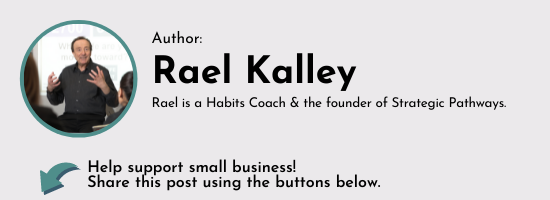Great Reasons to Improve Planning Skills
Those who can improve planning skills, who make planning a habit, are likely to have the best end result.
Experts like John E. Rehfeld have explained some primary differences between the way Japanese companies and North American companies conducted business. Rehfeld is former VP for Toshiba as well as an executive for Seiko. He notes a key difference is that Japanese companies spend 80% of their time planning their strategies and 20% executing them, whereas the North American model is to spend 20% of the time planning and 80% of the time executing.
Think about this for a moment: This difference in approach is often used to explain why Japanese companies were so much efficient, why their products outpaced ours, and in some cases why some are profitable than many of their North American counterparts.
The importance of making planning a non-optional and crucially important part of any endeavour has been brought home to me in recent weeks.
The Need to Improve Planning Skills
My wife Gimalle and I live in a condominium complex that has two high-rise towers connected by a single-story structure that houses a fully equipped gym, swimming pool, hot tub, and a recreational area equipped with a pool table, table-tennis table and a party room.
For the past 11 years, I have been a member of the condominium board and, in recent years, I have become more involved with the day-to-day operations and functioning of our property. I’ve become much more aware what happens when detailed planning does not precede execution.
Our property requires regular and ongoing maintenance and repair work, which right now entails a large project to replace the heating system in the ramp which leads to the vehicle entrance and exit from our underground parkade.
An important part of the contractor’s job the need for safe and effective traffic control. A 400-vehicle parkade provides a constant, busy parade of vehicles entering and exiting the building, as you can imagine. Security guards controlling traffic 24/7 was unrealistically expensive, so the contractor decided to place traffic lights at both the entrance and exit to the parkade.
Examine the “What Ifs”
In true North American fashion, no planning was put into how best to manage the flow of traffic. No “what if” scenarios were examined, and no problems were anticipated. Install the lights, problem solved.
This is why I encourage people to improve planning skills with the 80% planning, 20% execution model.
The moment the traffic lights were installed we pointed out a serious potential problem. There was no delay between the “exit” light turning red and the “entry” light turning green.
In other words, if one party was proceeding up the ramp on their green light, but had not yet cleared the ramp when the light turned to give right of way to drivers going the opposite direction, they risked being hit, because the other drivers naturally began to proceed as soon as they got a green light.
The contractor had not considered that both lights needed to be red for a period of time to allow all parties to clear the ramp before the next green light.
There are a variety of situations we encounter where taking time to improve planning skills, examining “what ifs” will help us see what are fairly obvious problems that may arise. This additional time spend before taking action may indeed prevent problems, and it certainly would have in this case.
Within minutes of the lights being activated, the complaints began. We witnessed numerous near-misses and close calls and after just a few days we notified the contractor that we would be bringing in security guards to direct traffic until they could rectify the situation.
Unfortunately, it took a little more than a week for a solution to be installed resulting in a substantial cost to our contractor.
Make it A Habit
The habit of planning would have prevented this from happening. Planning, anticipating and “what iffing” would have exposed the possible risks and prevented an expensive intervention.
There is an old adage that reminds us, “one way or another we always pay for our education” and this incident proved to be no exception.
Planning always beats mitigation and the habit of planning is a very inexpensive method to obtain an education.
Outside of this incident out contractor is doing a terrific job for us and I truly hope this lesson gives them the impetus to taking extra time for planning at the beginning of the job, and leave nothing to chance.
To improve planning skills, we must spend more time at the beginning of the project, but that time is a worthwhile investment because it allows us to mitigate risks, anticipate the otherwise unexpected, and keep costs as low as practically possible.

Let’s make a habit of meeting like this.
p.s.
If you’ve arrived at my blog via social media, or a Google search, welcome!
If you like what you read, I hope you’ll consider being part of my tribe by subscribing.
I take email privacy very seriously, and never share or sell addresses.


